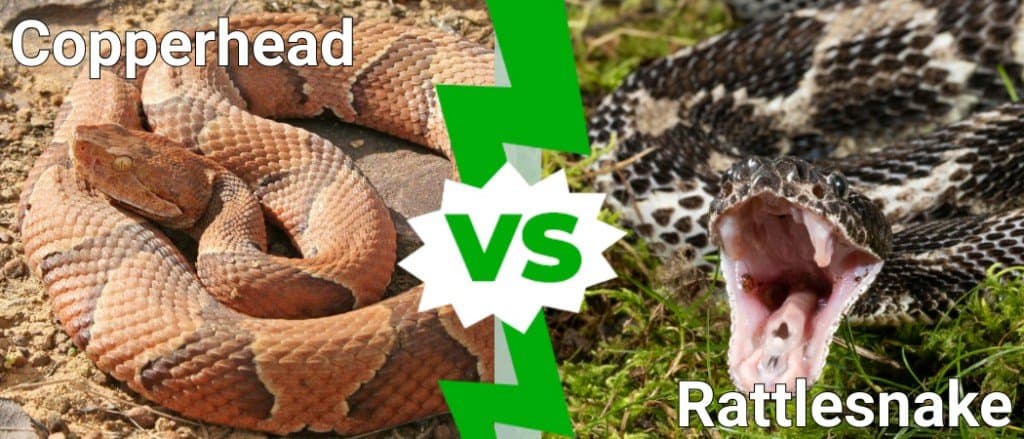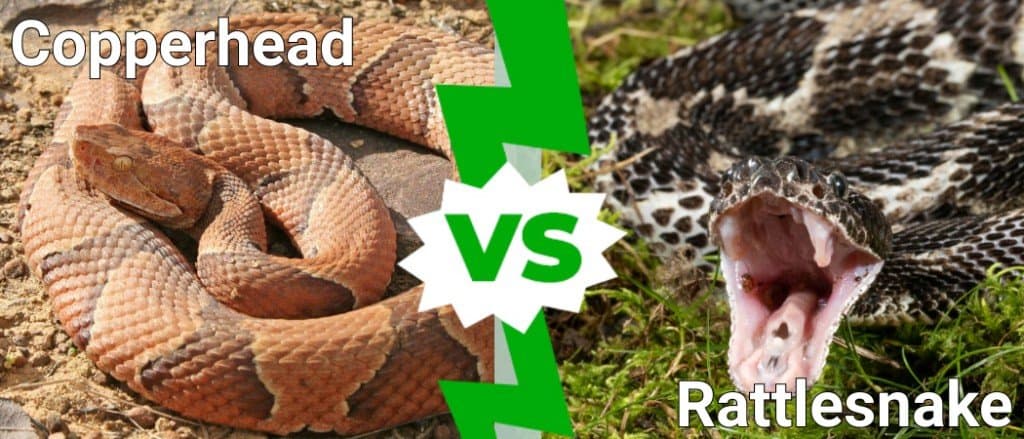Copperheads and rattlesnakes are both venomous snakes commonly found in North America. However, many people often confuse the two, wondering if copperheads are actually rattlesnakes. In this article, we will explore the differences and similarities between these two types of snakes to help you better understand these fascinating creatures.
Copperhead snakes are not rattlesnakes. Although they both belong to the same family of venomous snakes, Copperheads are identified by their copper-colored heads and hourglass-shaped bands. Rattlesnakes, on the other hand, have distinct rattles at the end of their tails. Both snakes are dangerous and should be avoided.

Are Copperhead Snakes Rattlesnakes?
Copperhead snakes and rattlesnakes are two of the most commonly known venomous snakes in North America. While both types of snakes are venomous, many people often wonder if they are the same species. In this article, we will explore the differences and similarities between copperhead snakes and rattlesnakes.
Physical Appearance
Copperhead snakes and rattlesnakes have distinct physical differences that set them apart from each other. Copperhead snakes are smaller in size, reaching an average length of 2 to 3 feet, while rattlesnakes can grow up to 8 feet long. The color pattern of copperhead snakes is a combination of brown, copper, and red, while rattlesnakes have a distinct diamond-shaped pattern on their skin.
Another difference is their tails. Rattlesnakes have a rattle on their tail, which they use as a warning sign to predators. On the other hand, copperhead snakes do not have rattles on their tails. Instead, they have a blunt tail that resembles their head, which they use as a defense mechanism to confuse predators.
Behavior and Habitat
Copperhead snakes and rattlesnakes also differ in their behavior and habitat. Copperhead snakes are primarily found in the eastern and central parts of the United States, while rattlesnakes can be found throughout North and South America.
Copperhead snakes are known for their docile behavior and are more likely to retreat than attack when confronted. They prefer to live in wooded areas and are often found near streams or other water sources. In contrast, rattlesnakes are known for their aggressive behavior and will not hesitate to strike if they feel threatened. They are often found in deserts, rocky areas, and grasslands.
Venom and Bite
Both copperhead snakes and rattlesnakes are venomous and can deliver a painful bite. However, their venom differs in composition and potency. Copperhead snakes have a mild venom that is not usually fatal to humans, while rattlesnakes have a more potent venom that can cause serious health problems.
In the case of a bite, it is crucial to seek medical attention immediately. Symptoms of a snakebite include swelling, pain, and discoloration of the affected area. In severe cases, a snakebite can lead to respiratory failure and even death.
The Benefits of Copperhead Snakes and Rattlesnakes
While copperhead snakes and rattlesnakes are venomous and can be dangerous to humans, they also play an important role in the ecosystem. They help control rodent populations, which can carry diseases and cause damage to crops.
In addition, their venom has been used for medical purposes, such as pain relief and blood thinning. Researchers are also studying the venom of these snakes for potential use in developing new drugs.
Copperhead Snakes Vs Rattlesnakes
Here are some key differences between copperhead snakes and rattlesnakes:
| Copperhead Snakes | Rattlesnakes |
|---|---|
| Smaller size | Larger size |
| Brown, copper, and red color pattern | Diamond-shaped pattern on skin |
| Blunt tail that resembles head | Rattle on tail |
| Mild venom | More potent venom |
| Docile behavior | Aggressive behavior |
Conclusion
In conclusion, copperhead snakes and rattlesnakes are two different species of venomous snakes with distinct physical, behavioral, and habitat differences. While they can be dangerous to humans, they also play an important role in the ecosystem and have potential medical benefits. Knowing the differences between these two types of snakes can help people stay safe and informed when encountering them in the wild.
Frequently Asked Questions
Here are some frequently asked questions about copperhead snakes and their relation to rattlesnakes.
What is a copperhead snake?
A copperhead snake is a venomous snake that is found in North America. They are named after their copper-colored heads and are known for their distinctive hourglass-shaped markings on their bodies. Copperhead snakes are often found in wooded areas and can grow up to 3 feet in length.
Although they are venomous, copperhead snakes are not usually considered dangerous to humans. Their bites can cause pain and swelling, but they are rarely fatal.
How are copperhead snakes different from rattlesnakes?
Copperhead snakes and rattlesnakes are both venomous snakes, but they belong to different genera. Copperhead snakes belong to the genus Agkistrodon, while rattlesnakes belong to the genus Crotalus.
One of the main differences between copperhead snakes and rattlesnakes is their venom. Copperhead venom is less potent than rattlesnake venom, but it can still be dangerous if left untreated. Another difference is their behavior. Copperhead snakes are generally more docile than rattlesnakes and are less likely to strike without provocation.
Do copperhead snakes have rattles?
No, copperhead snakes do not have rattles. Only rattlesnakes have rattles, which are made up of a series of interlocking segments at the end of their tails. The rattling sound is produced when the segments vibrate against each other.
Copperhead snakes do not have rattles, but they can still make a hissing sound when they feel threatened. This sound is produced by the snake expelling air through its nostrils.
Can copperhead snakes interbreed with rattlesnakes?
No, copperhead snakes and rattlesnakes cannot interbreed. Although they are both members of the subfamily Crotalinae, they belong to different genera and are not closely related enough to produce viable offspring.
Interbreeding between different species of snakes is rare in general, as most species have specific mating rituals and behaviors that are unique to their species.
What should I do if I encounter a copperhead snake or a rattlesnake?
If you encounter a copperhead snake or a rattlesnake, it is important to keep a safe distance and avoid provoking the snake. Do not attempt to handle the snake or capture it.
If you are bitten by a venomous snake, seek medical attention immediately. Do not try to suck out the venom or use a tourniquet, as these methods can do more harm than good.
Eric Church – The Snake (Official Lyric Video)
In conclusion, the question of whether copperhead snakes are rattlesnakes is a common misconception. While both species belong to the same family of venomous snakes, they have distinct differences in their appearance and behavior. Copperheads have a copper-colored head and a pattern of hourglass-shaped bands on their body, while rattlesnakes have a distinct rattle on their tail. Additionally, copperheads are known to be more docile and less likely to strike than rattlesnakes.
It is important to be able to identify these different species of snakes in order to avoid potential encounters and bites. If you do come across a snake in the wild, it is best to give it plenty of space and avoid provoking it. Remember to always respect these animals and their habitats, as they play an important role in maintaining the balance of our ecosystems.
In conclusion, while copperhead snakes and rattlesnakes may share some similarities, they are distinct species with unique characteristics. By understanding these differences and respecting these animals, we can safely coexist with them in the natural world.

